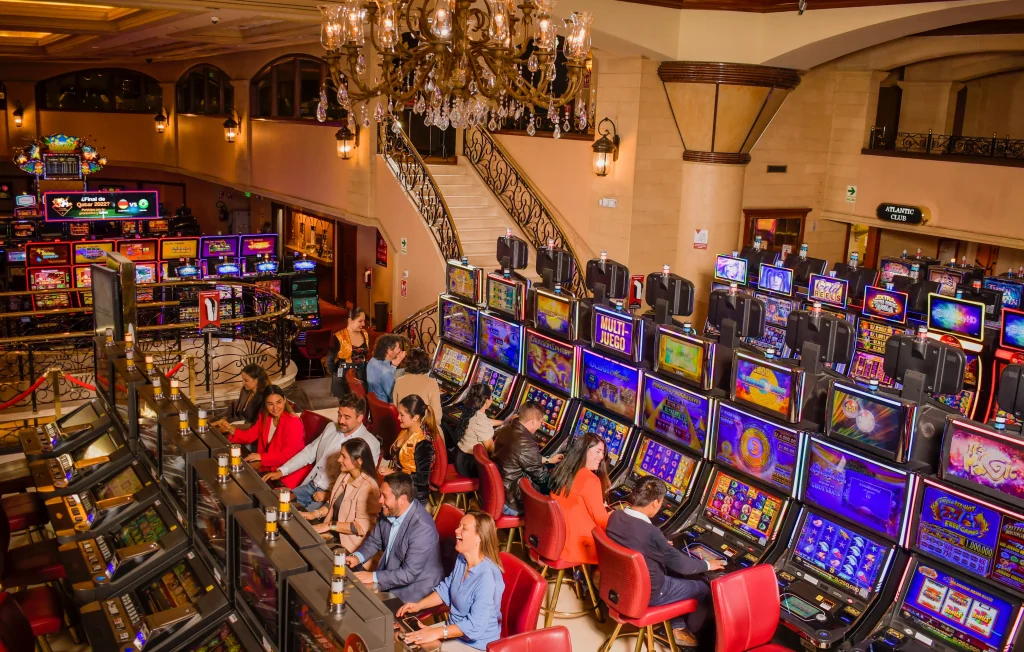Gambling games have long captivated the human imagination, drawing gamblers into a universe filled with chance, tactics, and the allure of thrill. Each game is painstakingly crafted not just for fun, but also to elicit targeted emotional responses that keep players immersed and interested. Understanding the motivations behind these designs reveals much about how behavioral psychology plays a vital role in the gaming experience.
From the vivid lights and dynamic sounds to the sophisticated layering of guidelines and payoffs, casino games are designed to create an atmosphere of excitement and eagerness. Game designers leverage psychological principles to influence gambler behavior, whether through the use of jackpots, near-miss scenarios, or social connections. By examining these aspects, we can better appreciate how casino games fulfill not just a want for entertainment, but more profound psychological needs for excitement and risk.

Understanding Gamer Behavior
Casino games are engineered with a thorough understanding of player psyche, which is crucial for luring and keeping players. The excitement of the game, combined with the expectation of winning, creates a formidable allure. Game designers employ elements like audio cues, colorful graphics, and captivating gameplay to engage attention and generate emotional responses. These sensory experiences enhance the immersive experience, making players feel more involved in the game.
Another significant aspect of player behavior is the idea of risk/reward dynamics. Casino games often weigh high-stakes situations with the potential for substantial rewards, which can cause the event known as near-miss experience. When players come near to winning, the brain produces dopamine, bolstering their behavior and prompting them to keep playing in quest of that elusive win. This cycle of anticipation and disappointment plays a key role in how games are constructed and promoted.
Lastly, social factors also play a critical role in player behavior at casinos. Many games are crafted to be played in teams or alongside other players, creating a sense of community and communal experience. The interaction inherent in games like blackjack enhances enjoyment and can result in prolonged gaming periods. Designers leverage on this by crafting environments that encourage players to stay, socialize, and return, making the overall casino experience more attractive.
The Role of Visuals and Sound
Visuals and audio play a crucial role in elevating the player’s experience within casino games. Designers utilize bright colors, striking graphics, and captivating animations to capture players’ attention and hold their focus. The use of motifs, such as adventure or luxury, helps create an immersive atmosphere that takes players into a different world. By connecting to the senses, these elements add to a intensified emotional response, encouraging players to engage more deeply with the games.
Audio design is just as important in enhancing the overall experience of casino games. The mix of ambient music, sound effects for winning combinations, and environmental noises creates an sound landscape that holds players enthralled. Sounds associated with victories, such as chiming bells or celebratory music, evoke feelings of thrill and reward, prompting players to keep playing. These sound cues are carefully placed to amplify the thrill of the game and create a more immersive experience.
Moreover, the synchronization of visuals and sound is crucial for supporting the game’s overall concept and atmosphere. Each element should coordinate harmoniously to create a unified experience that pulls players in. The effective use of this synergy not only improves user enjoyment but also increases the chances of return play, as players become more engaged in the immersive world that the gambling games offer. This thoughtful combination of imagery and sound ultimately enhances player involvement and loyalty. https://bet888.solutions/
Incentive Systems and Participation
The creation of gambling experiences significantly depends on incentive systems to keep participants engaged and returning for more. These structures are based in psychological theories that take advantage of human behavior and motivation. Participants are often motivated by the excitement of success, which is reinforced by instant responses through the game structure’s mechanics. This instant gratification not only improves the gaming experience but also fosters a feeling of success, encouraging participants to keep participating in hopes of bigger gains.
Gaming establishments adopt various incentive systems, such as large payouts, extra rewards, and increased rewards, to captivate players. These features create a level of thrill that sustains engagement. Additionally, the randomness of outcomes plays a significant role in sustaining attention. The variable reward system, where wins are unpredictable but occur often enough, keeps players on edge and driven to keep playing. This loop of anticipation and expectation is essential to the effectiveness of gambling experiences.
In addition, social elements, such as tournaments and multiplayer features, enhance the engagement factor by leveraging the desire to compete of participants. The shared experience of playing with fellow participants can intensify the thrill of success and create a community atmosphere within the casino. By combining these community elements with effective reward systems, casino games don’t just provide entertainment but also foster a stronger connection among players, solidifying their loyalty to the overall experience.